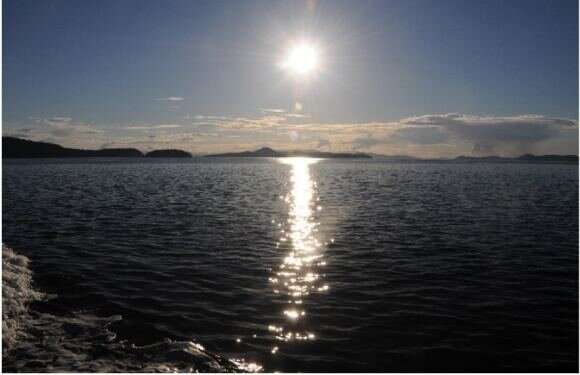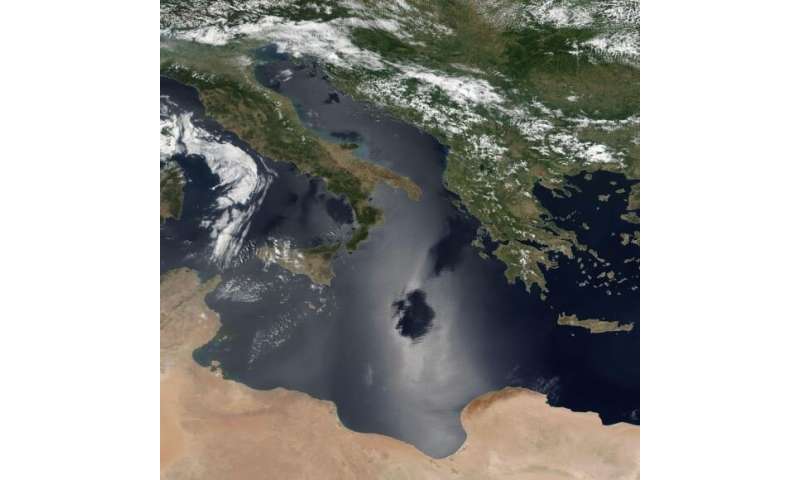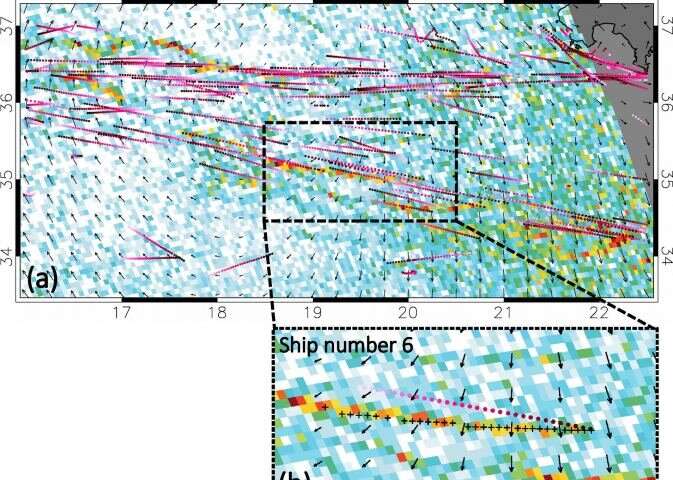Satellites can see the pollution trails from individual ships

All hands have to be on deck if the world is going to tackle degradation, and one of the biggest emitters is also one of the least well known—international shipping. A 2018 study estimated that pollution emitted from cargo ships resulted in 400,000 annual premature deaths from lung cancer and heart disease. Many of those deaths resulted from the sulfur dioxide the ships were belching into the air. Since the beginning of the year, sulfur dioxide has been capped at .5% of emissions, compared to 3.5% previously. While the long term benefits of that emissions cap will take some time to appear, there's another pollutant that could potentially be tackled in the near future: nitrogen dioxide.
Nitrogen dioxide (NO2) is one of the emissions from diesel engines, and has been strictly capped in the automotive market for a number of years. While the shipping industry so far has escaped regulation, there is a strong possibility that restrictions may be coming in the near future. Regulations in themselves are great, but they are useless if not enforced, and the open ocean is a notoriously difficult place to enforce them. That difficult task might have just gotten easier, as scientists at the European Space Agency realized they can use satellite data they are already collecting to track the nitrogen dioxide emissions of individual ships on the open ocean.
The satellite the scientists used is called Copernicus Sentinel-5P and is primarily used to monitor air pollution. Launched in 2017, it has monitored things such as nitrous oxide emissions over Siberian gas pipelines and China's industrial cities. But this is the first time it has turned its attention to the open ocean.
Part of the reason for that is a particular difficulty when monitoring the ocean from space—sunglint. If you've ever been to an ocean or lake where there is a trail of sunlight leading directly to the sun, that is sunglint. In satellite imagery, this phenomena shows up as a lightening of the water, throwing off readings of interesting atmospheric data points such as cloud cover and ship emissions.
-

Example of sunglint from a satellite’s perspective – specifically in the Mediterranean. Credit: ESA -

Concentrations of nitrogen dioxide in the Mediterranean, including showing individual ship paths. Credit: ESA
Recently, observers developed a way to solve that problem by correlating the image with elevation calculations. Originally this technique was used for detecting snow and ice, but the team modified it to easily differentiate ship emissions from both clouds and sun glare.
To do this, they need ship location data to correlate their observations with. While ships are required to use location transponders on the open ocean, some, including those trying to avoid emissions controls, might simply turn their transponders off. That lack of transparency has deeper roots than will be solved with satellite technology, but it could potentially pose a problem to the emissions readings.
Another potential problem is that, while the satellites are able to track individual ships, that is true only for the largest ships, or convoys of smaller ships. Smaller ships can still evade detection due simply to their size. The researchers hope to eliminate this technical challenge with future launches of more capable satellites, such as the Copernicus Anthropogenic Carbon Dioxide Monitoring Satellites. The development of those satellites and analysis of their data will also require all hands on deck, but this is yet another example of how space technology can help solve practical problems here on Earth.
Source Universe Today




















